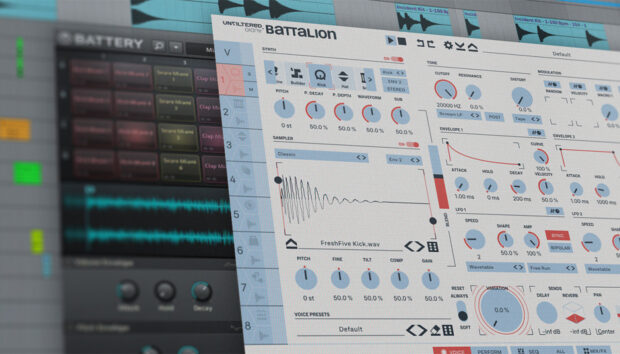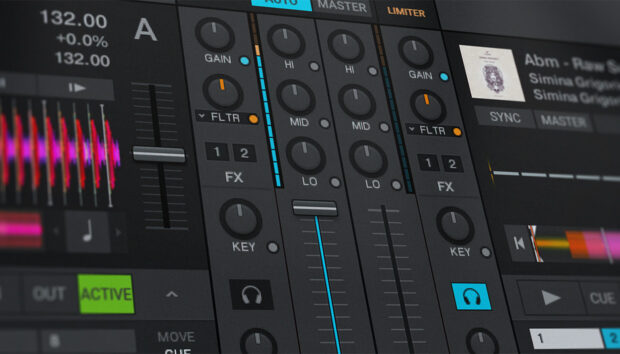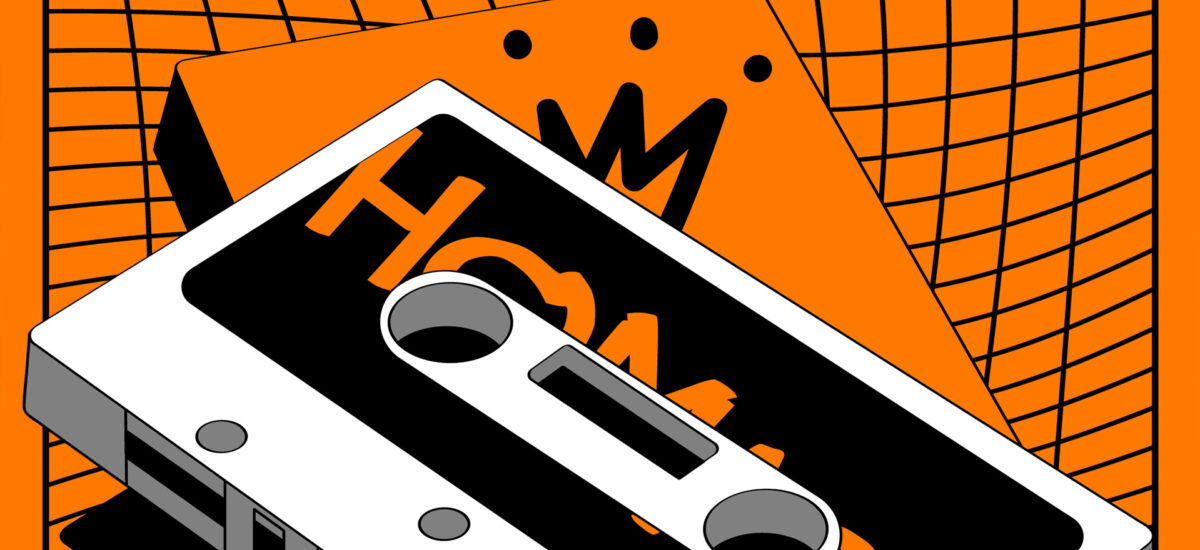
Lo-fi hip hop can turn any moment into a laid-back, nostalgic adventure. It’s really no wonder it’s become one of the most popular genres streamed on platforms like YouTube and Spotify in recent years. Weaving vintage aesthetics with effortlessly cool rhythms, lo-fi hip hop producers always bring the right vibe—whether you’re unwinding after a long day, chilling with friends by the pool, or cram-studying for that final tomorrow.
Now, have you ever wondered how those lo-fi wizards conjure up such sweet beats? Or perhaps you want to learn how to create your own tranquil, lo-fi masterpieces? Well, you’re in luck. In this article, we’re going to introduce you to the fundamentals of lo-fi hip hop production. We’ll be breaking down the process of how to make lo-fi hip hop step-by-step that sounds like this:
Jump to these sections:
Follow along with the new Drift Theory Expansion and Homage Play Series Instrument, two powerful lo-fi tools that bring warped melodies and distorted textures to your music.
What is lo-fi hip hop?
lo-fi hip hop is a subgenre of hip hop music production that is characterized by its relaxed and mellow sound. It often features instrumental beats with a vintage feel. lo-fi hip hop typically has a calm and soothing atmosphere. It’s designed to be easy to listen to and is often used as background music for relaxation, conversation, or concentration.
Give this Spotify playlist a whirl to brush up on the latest lo-fi hip hop jams.
Lo-fi hip hop often incorporates samples from old jazz and soul records. This lends itself to the retro quality often associated with the genre. Samples are usually manipulated and looped to create a unique, sonic landscape. But, the intentional use of imperfections in the music, such as vinyl crackle, static, or slightly offbeat rhythms, is what gives the genre the “lo-fi” prefix. These imperfections contribute to the cozy, nostalgic aesthetic that just keeps growing in popularity.
Why is lo-fi hip hop so popular?
lo-fi hip hop has gained popularity in recent years, especially as background music for studying, working, or relaxing. Because lo-fi hip hop tracks often feature repetitive loops and patterns, this makes them ideal for background listening. Most fans of the genre praise lo-fi hip hop for its ability to increase focus without distraction. Because of its calm and focused atmosphere, lo-fi hip hop is one of the favorite choices for students, remote workers, and anyone else looking to just unwind or get lost in their own thoughts.
How to make a lo-fi hip hop beat
Creating a lo-fi hip hop beat involves combining various elements to achieve a laid-back, mellow, and nostalgic sound. Below, I’ve outlined my typical step-by-step process for making lo-fi hip hop beats. But, keep in mind, you’re free to adjust the order of the steps however best fits your production workflow.
1. Program a drum pattern
First, begin by creating a simple hip hop drum pattern using a drum kit or individual drum samples. lo-fi hip hop beats often feature a slower tempo (typically around 70-90 BPM) and include some combination of kicks, snares, and hi-hats. Sometimes additional percussion elements are added, but be careful not to overload your drum section. Remember, lo-fi hip hop is all about relaxed and laid-back rhythms. So, feel free to keep the drum section pretty minimal, with just enough to give the track a bit of a soulful groove.
When programming your drums, intentionally offsetting some of your drum hits slightly can help to create a more natural sounding rhythm. Steer clear of quantizing everything perfectly to the grid. Instead, add a touch of swing or shuffle to your drum pattern to enhance the groove. You can also alter the velocity of individual drum hits to make your beat more dynamic. This will contribute to the relaxed feel and bring a bit of humanness to the rhythm.
For drum programming, Battery 4 is my go-to drum sampler software. It’s great for building custom drum kits and tweaking samples to achieve the exact flavor you’re craving. But, there are also dozens of Expansion packs that include fresh, ready-to-go drum kits for Battery 4. And, lucky for us, many of them are perfect for making lo-fi hip hop beats!

For the audio example below I used one of the Battery 4 kits included in the new Drift Theory Expansion called “Breakmas Kit.” The Drift Theory Expansion pack comes loaded with tons of great synth presets, vintage-sounding samples and loops, and super vibe-y drum kits that are perfect for making lo-fi hip hop with that nostalgic, crate-digger aesthetic. But, the Breakmas Kit had just the loop I needed to demonstrate what a good, lo-fi hip hop drum beat should sound like.
Notice how the loop has a bit of vinyl crackle to it? It’s subtle textures like these that help create that lo-fi aesthetic we’re going for.
Remember that the key to programming a lo-fi hip-hop drum pattern is to keep it simple, laid-back, and soulful. The drums should support the other elements of the track and contribute to the overall relaxed atmosphere of the music.
If you’re new to beat making, check out this article on Beat-making 101: How to make a beat to get you up to speed.
2. Create chords and melodies
Lo-fi hip hop is known for its soothing chords and melodies. You can create these using a variety of instruments such as electric pianos, synths, or even acoustic guitars. Try experimenting with jazzy or soulful chord progressions like the ii-V-I progression (in the key of C major, you’d use Dm7, G7, and Cmaj7). Or, if you want more of a pop sound, try the vi-IV-I-V progression (in C major, you’d use Am, F, C, and G chords). You could even keep it nice and simple with just a two-chord loop. Let’s try this last option and see how it plays out.
For the audio example below, I’ll be toggling between two chords (Ab/Db) using one of the presets included in the new Homage Play Series Kontakt instrument.
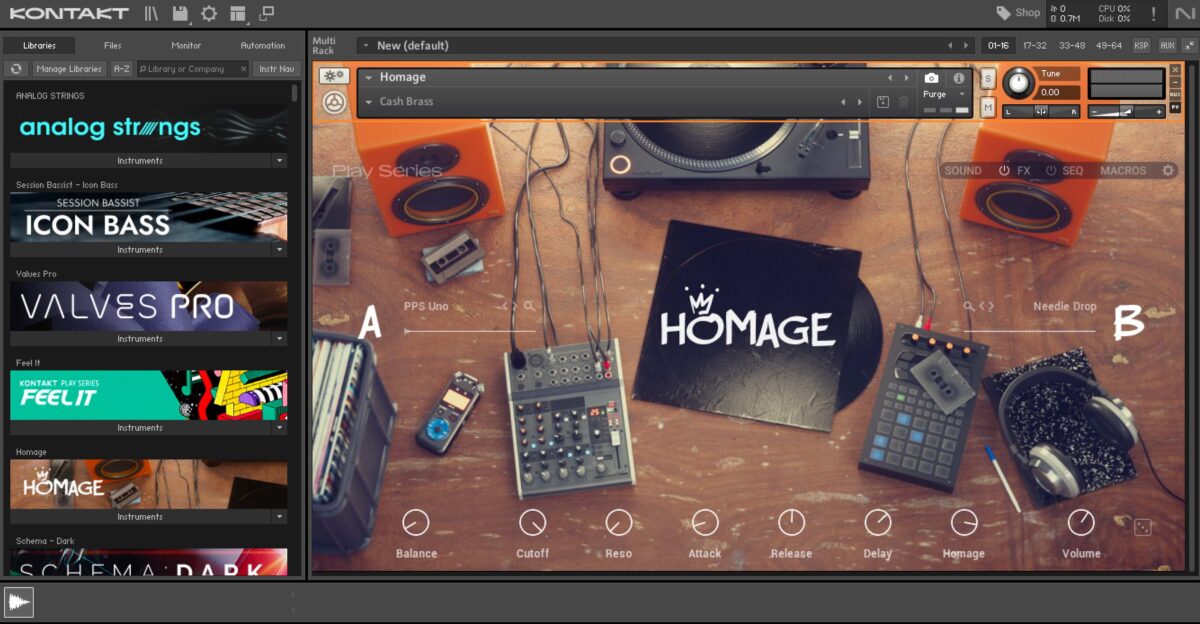
The particular preset I’ll be using for my base chords is called “Cash Brass,” but it’s worth mentioning that the Homage Play Series instrument was designed specifically for making lo-fi hip hop beats. It comes with plenty of saturated synths, keys, guitars, basses, and more. Plus, many of the presets include layered noise samples that add instant lo-fi character to your productions. Take a listen.
Hear how the added static built into the preset gives it a warm, cozy vibe? Honestly, if you’re looking to make lo-fi hip hop beats on the regular, I really can’t recommend Homage enough. Let’s try out another one of Homage’s presets called “Chopped Keys” for the melody. This one also has a bit of extra crackle to it that I really enjoy.
For the melody above, I just improvised a bit on my MIDI keyboard until I found something I liked. But, keep in mind that simplicity is best when it comes to crafting lo-fi hip hop melodies. Using gentle, sustained notes helps evoke a sense of calm, but overly complex melodies are gonna kill the chill. Just experiment with different melodic ideas until you find one that resonates with you.
Take a listen to the melody overtop the chords and drum loop.
3. Add a bass line
Now it’s time to add a bit of low end with a bass line. Start by selecting a bass sound that fits the lo-fi vibe. Electric basses, especially fretless or upright basses, always work well for the genre. But, you can also use synth basses with a warm, rounded tone. For my bass line, I’ll be using yet another Homage preset called “Harma Bass”. It’s got plenty of warmth with just a hint of amp buzz. Give it a listen.
Simplicity is key, as overly complex bass lines can disrupt the relaxed atmosphere. Pay attention to the chords and harmonies in your track. The bass should harmonize with, or support, the chords. Start by playing the root notes of the chords in your progression and, as you become more comfortable, you can experiment with adding passing tones or creating simple walking bass lines.
To create a sense of groove, experiment with syncopation. Play around with offbeat notes and rhythmic variations to make your bass line more interesting. But it’s important to note that the role of the bass in lo-fi hip hop isn’t necessarily to drive the track forward—it’s to keep the listener feeling cozy with where they’re at right now. So keep it mellow.
Here’s the bass in context with the rest of my mix so far.
4. Select samples
Now that we’ve got a pretty good groove going, let’s find some lo-fi samples to throw into the mix. For this, I’ll be using a couple more Battery 4 kits from that same Drift Theory Expansion pack. That’s right—Battery 4 kits aren’t just for percussion. Many of them actually have a ton of extra sounds and textures you can toss into your mix to spruce things up. And the kits in the Drift Theory Expansion are packed full of lo-fi gold.
Take a listen to these piano samples I found in the “Elevate Kit.”
In the audio example above, I just loaded up the Elevate Kit and triggered two of the samples alternating back and forth. Here’s the piano roll to prove it.

I also found a lot of great samples that’ll fit my track in the “Crate Diggin Kit.”
Take a listen to this loop I made just by triggering a handful of the samples using my Komplete Kontrol keyboard.
The Drift Theory Expansion was also designed specifically for producing lo-fi hip hop, and we’ve barely scratched the surface of what’s included. So, definitely snag it if you’re serious about producing quality lo-fi hip hop beats.
If you’re using your own samples, go ahead and chop them up, pitch-shift them, reverse them, or apply other effects to give them a unique lo-fi character. One great (free) tool for adding some lo-fi texture to your tracks is iZotope Vinyl. It comes with a range of settings to play with in order to infuse a bit of grain, grit, and crackle to your recordings.
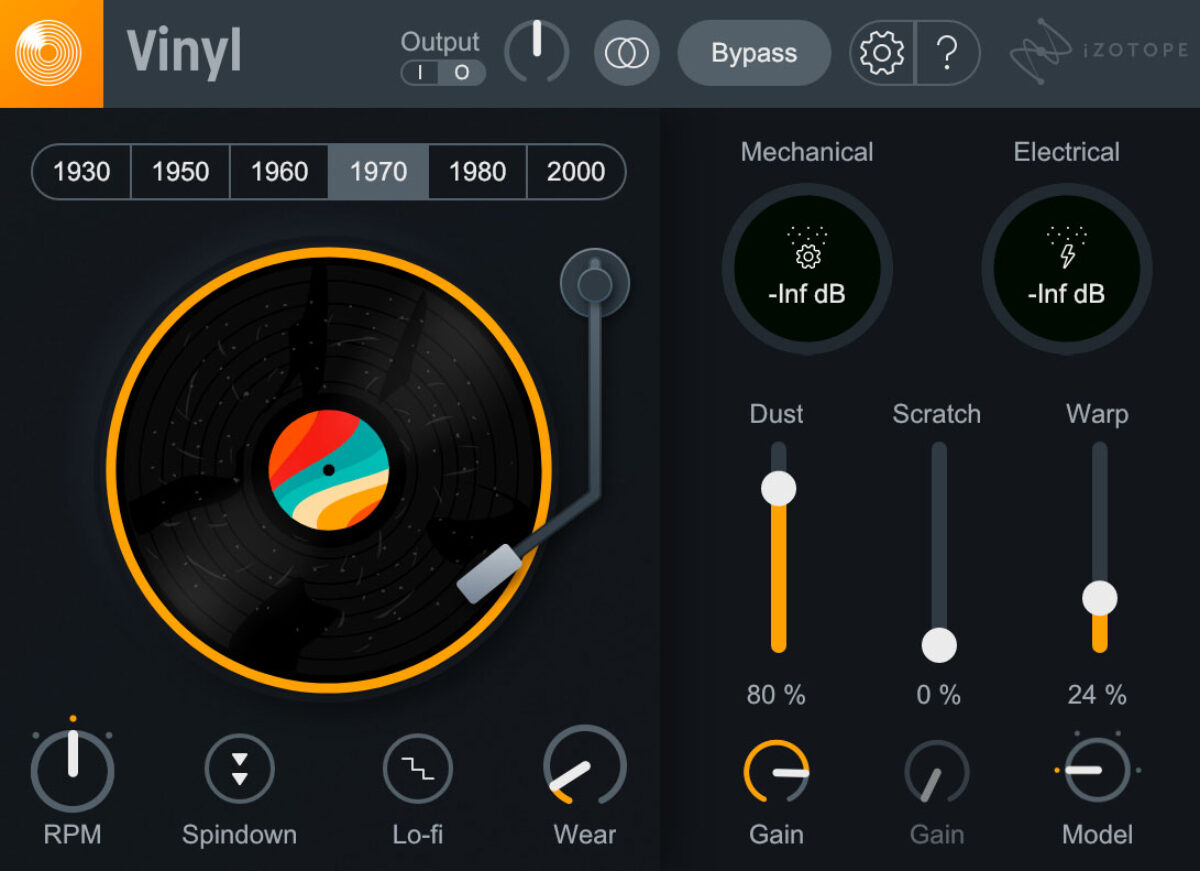
Let’s take a listen to what my track sounds like with these lo-fi samples thrown into the mix.
PRO TIP: You can also create your own samples using some of these free lo-fi instruments for Kontakt.
5. Arrange your track
We’ve got all the parts and pieces—now it’s time to arrange them into a full track. Lo-fi hip hop tracks can be relatively simple, but they should have a clear beginning, middle, and end. Introduce and remove elements gradually to keep the listener engaged and layer different elements in your beat to create depth and texture. For example, you can layer multiple samples, add vinyl crackle or ambient sounds, and blend them together to create a cohesive and immersive atmosphere.
Another thing to keep in mind when arranging your song is that lo-fi hip hop beats often have repetitive loops that are easy to listen to without becoming monotonous. Loop certain key elements (like your drums and chords) to give the track a hypnotic effect, but introduce different samples throughout to keep your beat engaging to the listener.
To hear this in action, take a listen to my final mix down below.
6. Master your lo-fi hip hop beat
Once you’re happy with your arrangement, it’s time to send it to the master bus for a bit of mastering magic! I use iZotope Ozone to master all my tracks, regardless of genre.
Ozone has a really nifty feature called “Master Assistant” that will intelligently listen to your track and then provide a custom mastering chain to give it that last bit of professional polish. Take a listen to what it was able to do with my mix down.
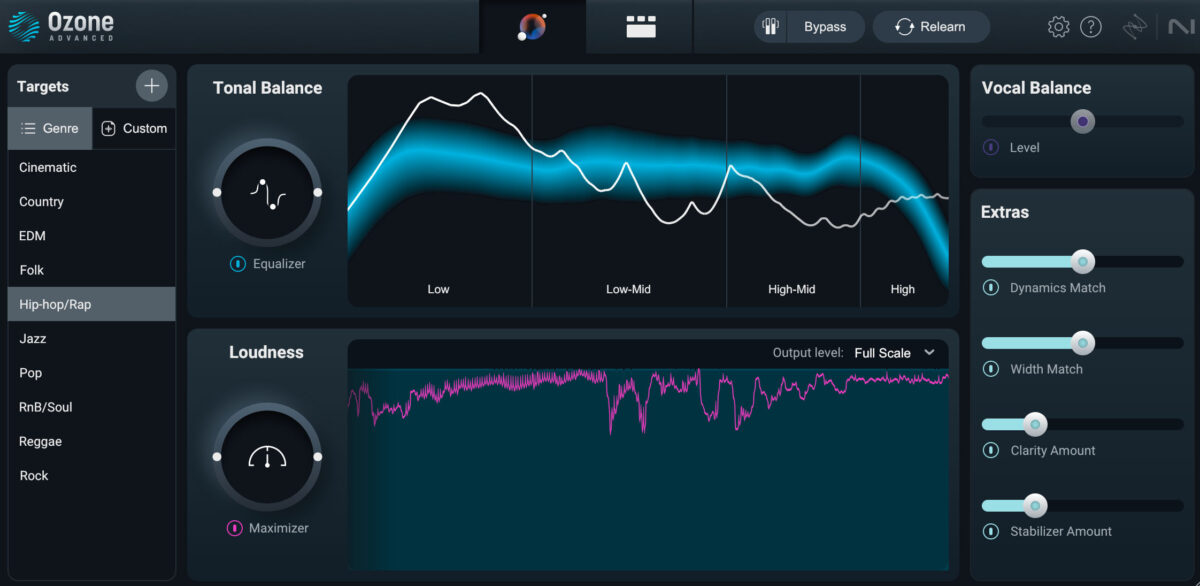
Once your track is mastered, that’s all, folks! See, creating a lo-fi hip hop beat can be pretty easy and fun with the right tools.
Start producing lo-fi hip hop
We’ve defined the lo-fi hip hop genre and broken it down piece by piece. By now, you should have a pretty good understanding of what it takes to create a lo-fi hip hop track. At this point, the only thing left to do is to start producing lo-fi hip hop of your own!
Again, if you’re serious about lo-fi hip hop production, I can’t tell you how much good it’ll do you to get both the Homage Play Series Kontakt instrument and the Drift Theory Expansion. They’ll definitely help you level up your lo-fi hip hop production game.
And for a limited time, you can get them both for a discount in this bundle!
Keep in mind that experimentation is key when making lo-fi hip hop beats. So, don’t be afraid to try new techniques and explore different sounds to develop your unique lo-fi style. Over time, you’ll develop your own signature sound that sets your beats apart.








